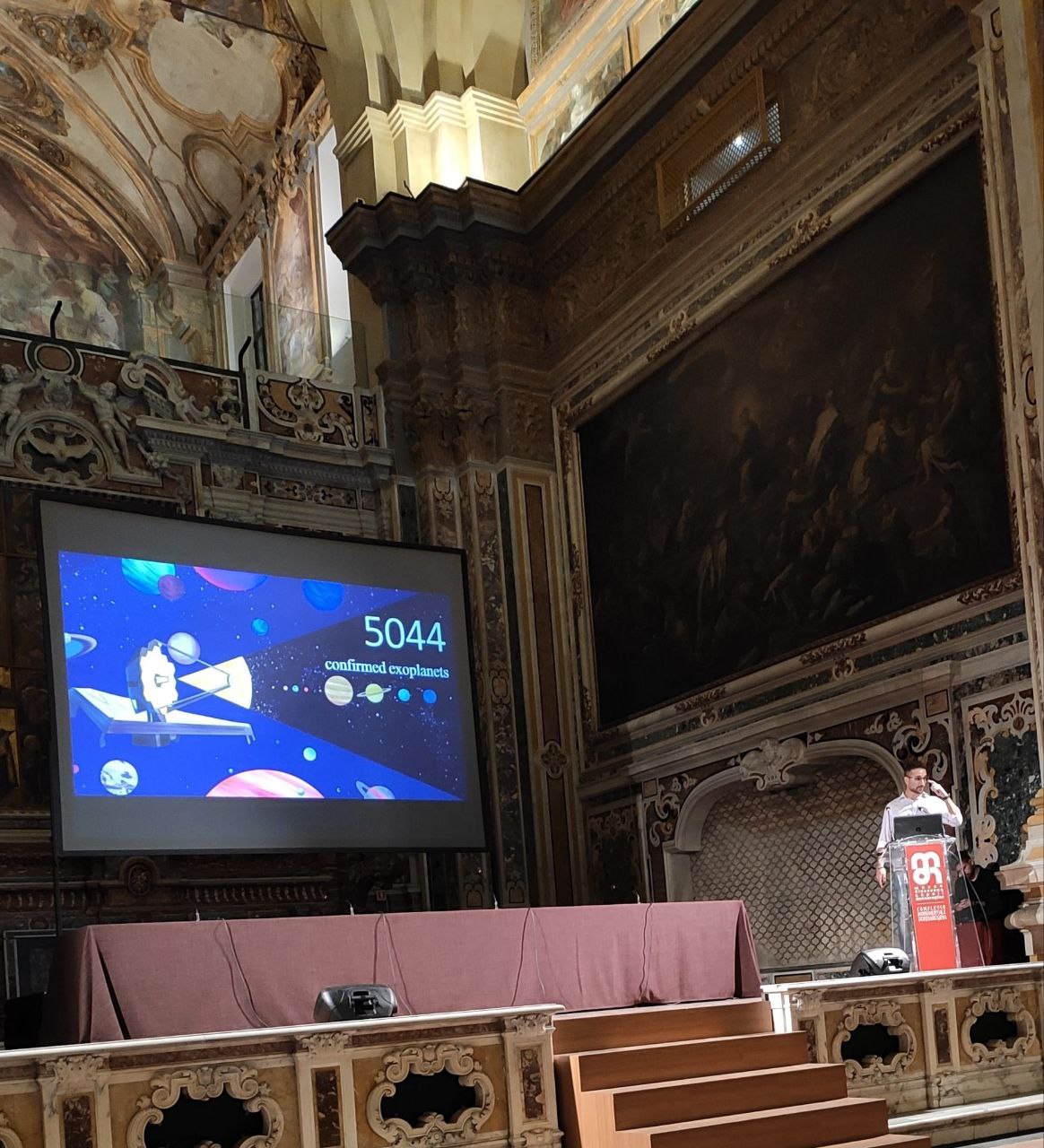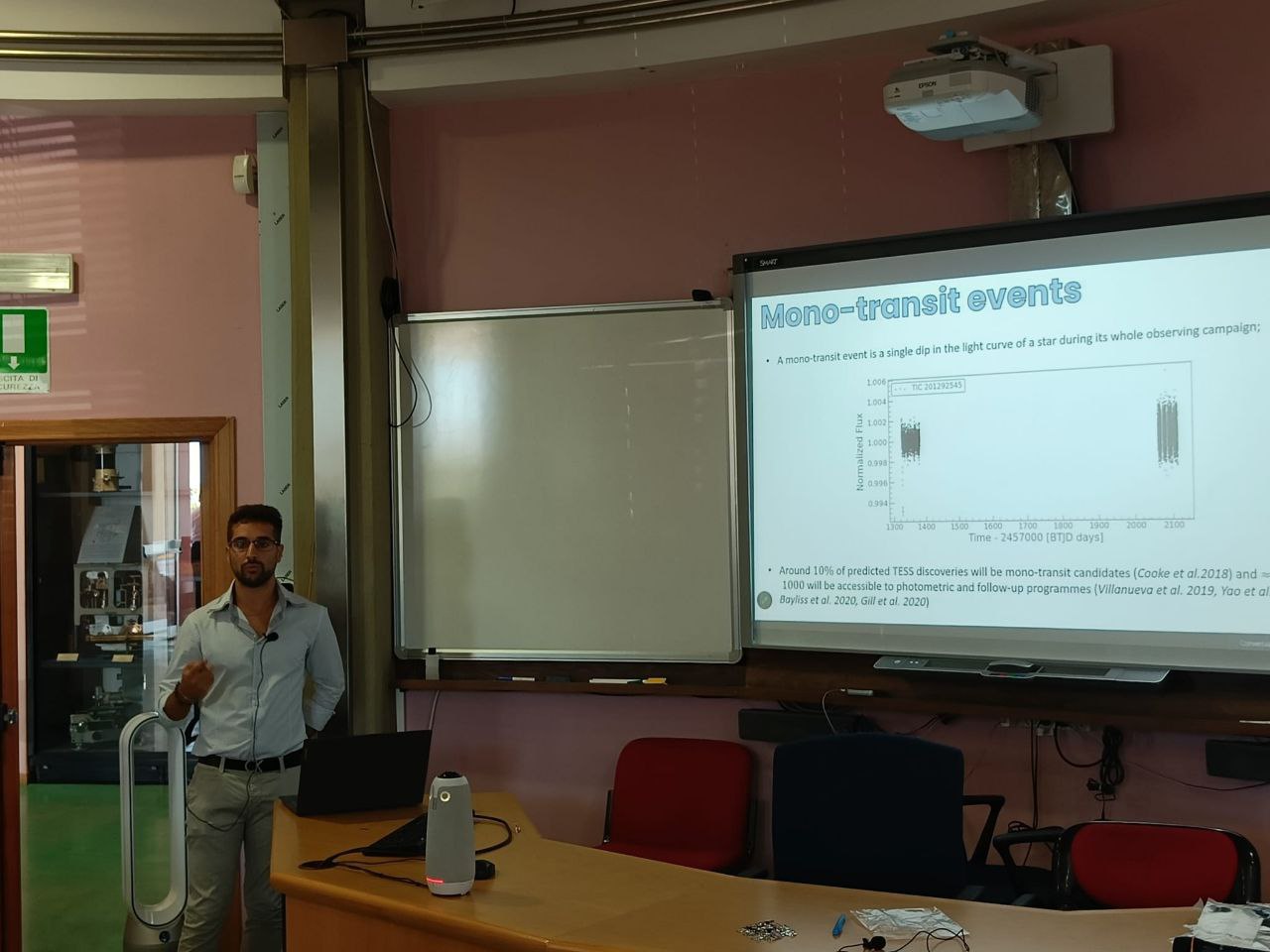Word Search Science for Kids Ages 8-10
Explore the Wonders of Science, One Word at a Time with 400 Words to Discover
Explore the Wonders of Science, One Word at a Time with 400 Words to Discover
Explore the Four Seasons with 400+ Words to Discover
Tracking Your Progress
Data Analysis of the UEFA Champions League statistics from 1955 to 2023.
A web scraping tool to extract soccer tournament standings from livescore.com.
Data Analysis of the most streamed Spotify songs up to 2024.
Published in MNRAS, 2022
We statistically validated a sample of hot Neptune candidates applying a two-step vetting technique using DAVE and TRICERATOPS. We performed a systematic validation of 250 transit-like events in the Transiting Exoplanet Survey Satellite archive in the parameter region defined by P≤4 days and 3R_Earth≤R≤5R_Earth. Through our analysis, we identified 18 hot Neptune-sized candidates, with a false positive probability <50 per cent. Nine of these planet candidates still need to be confirmed. For each of the nine targets, we retrieved the stellar parameters using ARIADNE and derived constraints on the planetary parameters by fitting the light curves with the juliet package. Within this sample of nine candidates, we statistically validated (i.e. with false positive probability <0.3 per cent) two systems (TOI-277 b and TOI-1288 b) by re-processing the candidates with TRICERATOPS along with follow-up observations. These new validated exoplanets expand the known hot Neptunes population and are high-priority targets for future radial velocities follow-up.
Recommended citation: Magliano, C. et al. 2022, "A systematic validation of hot Neptunes in TESS data." MNRAS. 519, 1562.
Download Paper
Published in MNRAS, 2023
The Transiting Exoplanet Survey Satellite (TESS) mission is providing the scientific community with millions of light curves of stars spread across the whole sky. Since 2018, the telescope has detected thousands of planet candidates that need to be meticulously scrutinized before being considered amenable targets for follow-up programs. We present the second catalog of the Planet Patrol citizen science project containing 999 uniformly vetted exoplanet candidates within the TESS ExoFOP archive. The catalog was produced by fully exploiting the power of the Citizen Science Planet Patrol project. We vetted TESS Objects of Interest (TOIs) based on the results of Discovery And Vetting of Exoplanets (DAVE) pipeline. We also implemented the automatic disposition generator, a custom procedure aimed at generating the final classification for each TOI that was vetted by at least three vetters. The majority of the candidates in our catalog, 752 TOIs, passed the vetting process and were labelled as planet candidates. We ruled out 142 candidates as false positives and flagged 105 as potential false positives. Our final dispositions and comments for all the planet candidates are provided as a publicly available supplementary table.
Recommended citation: Magliano, C. et al. 2023, "The TESS Triple-9 Catalog II: a new set of 999 uniformly vetted exoplanet candidates." MNRAS. 521, 3749.
Download Paper
Published in MNRAS, 2024
The Transiting Exoplanet Survey Satellite (TESS) and the upcoming mission PLAnetary Transits and Oscillations of stars (PLATO) represent two space-based missions with complementary objectives in the field of exoplanet science. While TESS aims at detecting and characterizing exoplanets around bright and nearby stars on a relative short-period orbit, PLATO will discover a wide range of exoplanets including rocky planets within the habitable zones of their stars. We analyse mono-transit events in TESS data around stars that will or could be monitored by the PLATO mission, offering a unique opportunity to bridge the knowledge gap between the two missions and gain deeper insights into exoplanet demographics and system architectures. We found 48 TESS mono-transit events around stars contained in the all-sky PLATO Input Catalog; of these, at least four will be imaged on the first long-pointing PLATO field, LOPS2. We uniformly vetted this sample to rule out possible false positive detections thus removing 10 signals from the original sample. We developed an analytic method which allows us to estimate both the orbital period and inclination of a mono-transit planet candidate using only the shape of the transit. We derived the orbital period and inclination estimates for 30 TESS mono-transit planet candidates. Finally, we investigated whether these candidates are amenable targets for a CHaracterising ExOPlanets Satellite observing campaign.
Recommended citation: Magliano, C. et al. 2024, "PLATO on the shoulders of TESS: analysing mono-transit planet candidates in TESS data as a prior knowledge for PLATO observations." MNRAS. 528, 2851.
Download Paper
Published in A&A, 2024
The search for exoplanets has led to the identification of intriguing patterns in their distributions, one of which is the so-called sub-Jovian and Neptune desert. The occurrence rate of Neptunian exoplanets with an orbital period P ≲ 4 days sharply decreases in this region in period-radius and period-mass space. We present a novel approach to delineating the sub-Jovian and Neptune desert by considering the incident stellar flux F on the planetary surface as a key parameter instead of the traditional orbital period of the planets. Through this change of perspective, we demonstrate that the incident flux still exhibits a paucity of highly irradiated Neptunes, but also captures the proximity to the host star and the intensity of stellar radiation. Leveraging a dataset of confirmed exoplanets, we performed a systematic analysis to map the boundaries of the sub-Jovian and Neptune desert in the (F, Rp) and (F, Mp) diagrams, with Rp and Mp corresponding to the planetary radius and mass, respectively. By using statistical techniques and fitting procedures, we derived analytical expressions for these boundaries that offer valuable insights into the underlying physical mechanisms governing the dearth of Neptunian planets in close proximity to their host stars. We find that the upper and lower bounds of the desert are well described by a power-law model in the (F, Rp) and (F, Mp) planes. We also obtain the planetary mass-radius relations for each boundary by combining the retrieved analytic expressions in the two planes. This work contributes to advancing our knowledge of exoplanet demographics and to refining theoretical models of planetary formation and evolution within the context of the sub-Jovian and Neptune desert.
Recommended citation: Magliano, C. et al. 2024, "Revisiting the conundrum of the sub-Jovian and Neptune desert. A new approach that incorporates stellar properties." A&A. A162, 692.
Download Paper
Published:
Title of talk: The efficiency of the oxygenic photosynthesis on Earth-like planets in the habitable zone. 
Published:
 Title of talk: “The efficiency of the oxygenic photosynthesis on Earth-like planets in the habitable zone”.
Title of talk: “The efficiency of the oxygenic photosynthesis on Earth-like planets in the habitable zone”.
Published:
Title of talk “A systematic validation of hot Neptunes in TESS data”.
Published:
Title of talk: “A systematic validation of hot Neptunes in TESS data.”
Published:
Title of talk: “A systematic validation of hot Neptunes in TESS data”.
Published:
Title of talks: “A systematic validation of hot Neptunes in TESS data” and “PLATO on the shoulders of TESS: Analyzing mono-transit planet candidates in TESS data as a prior knowledge for PLATO observations”. 
Published:
 I won a grant of Società Italiana Scienze Planetarie which allowed me to organize the first workshop of my Exoplanet research group.
I won a grant of Società Italiana Scienze Planetarie which allowed me to organize the first workshop of my Exoplanet research group.
Published:
Title of talks: “The Hot Neptune Desert”. More information can be found at the following link.
Undergraduate course, University 1, Department, 2014
This is a description of a teaching experience. You can use markdown like any other post.
Workshop, University 1, Department, 2015
This is a description of a teaching experience. You can use markdown like any other post.